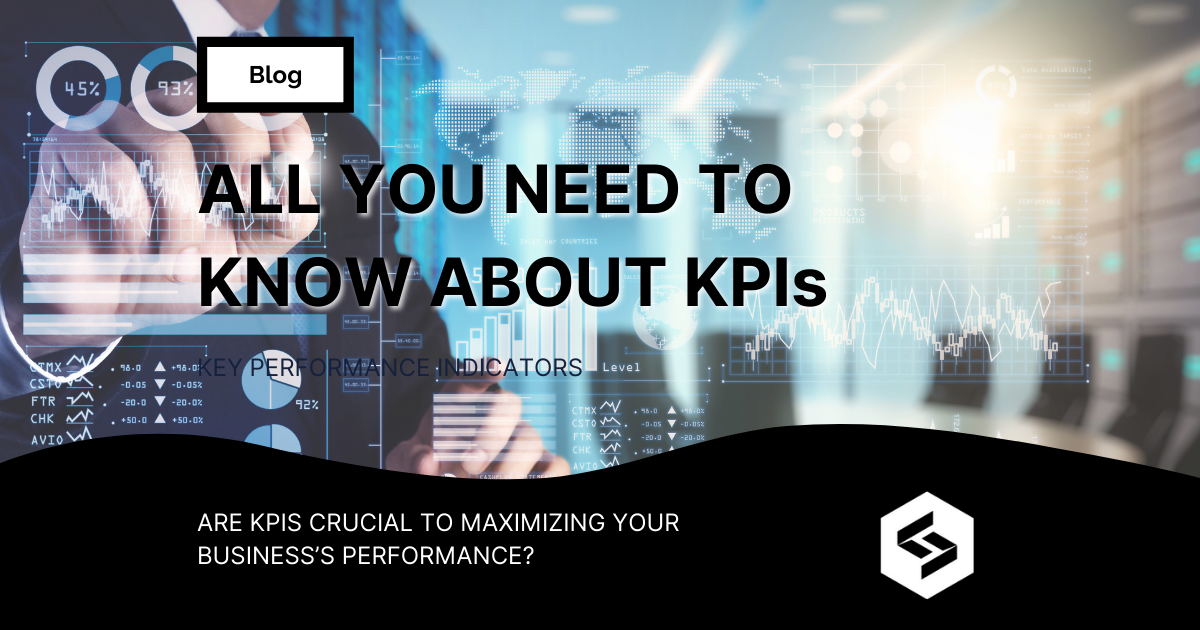Are KPIs Crucial to Maximizing your Business’s Performance?

What is a KPI?
KPIs (Key Performance Indicators) are quantifiable measurements that help businesses assess how effectively they’re achieving operational and strategic goals. They are metrics that reflect the status quo of a particular element or “thing” at a specific moment in time. They measure the specific performance of an individual, team, or department across a myriad of industries and can help companies understand how their business is performing and what factors are contributing to their success, or lack of success.
Some examples of KPIs across departments include:
- Sales: New Inbound leads; Lead Conversion percentage; Average order value; Sales Target %
- Management: Customer Acquisition Cost; Customer Satisfaction Score; ROE (Return on Equity)
- Marketing: Cost per Lead; New Customers, Cost per Acquisition; Conversion Rates; Return on Ad Spend (ROAS)
- IT: Total Support Tickets; Open Support Tickets; Ticket Resolution Time; Average Time Repair; Server downtime; Total Projects; Projects on Budget.
The benefits of KPIs
- KPIs can help save time and increase efficiency in management by allowing an organization to assess which (and how many) interdependent processes are affecting the overall performance of a business
- KPIs can be used to set measurable goals and help define the steps that are needed to reach those goals
- KPIs can make communication between departments within an organization more efficient, so teams or groups can share information and understanding about how to achieve certain goals and advance the goals of the organization
- KPIs can help minimize bias, so decision-making is focused on observable facts and metrics
KPI Categories
There are many different categories of key performance indicators that can be used to measure short-term or long-term performance at different levels within a business. Generally, some of the most common categories of KPIs are:
- Operational: KPIs that measure the short-term, everyday processes and efficiency in an organization. Gives a business the ability to quickly assess how various areas and different levels in an organization are performing and allow corrective action to be taken quickly if necessary
- Strategic: These KPIs measure long-term, overarching goals within a business or organization. They are used for the long game, to monitor and measure progress and trends toward a particularly long term company goal
- Leading or Lagging: Leading KPIs give you an indication of what will happen in the future and Lagging KPIs indicate something about what has already occurred. All organizations should use a blend of both lagging and leading KPIs for a balanced view of a particular goal. Using one without the other could lead to decision-making detrimental to a business or organization
Tips to using KPIs effectively
- Adhere to the SMART acronym to develop KPIs: Specific; Measurable; Achievable, Relevant, and Time-based
- Businesses expand, contract, and change in other ways over time. If and/or when KPIs are no longer relevant, they should be adapted accordingly or a new KPI should be created
- IT framework and internal systems to communicate across platforms are essential.
KPI information is compiled across departments and assembled into coherent visual performance charts - KPI data should be easily accessible visually and conceptually to grab the attention of decision-makers. The last thing department managers and executives want to do is wade through irrelevant information in their decision-making process
Are there drawbacks to KPIs?
- KPIs are an aggregation of many pieces of information into a single number that reflects the status of the element or thing being assessed. While this simplifies complexity, important information may be left out that may be crucial to the decision-making process
- One KPI is usually not sufficient to understand the complexities of an organization. Since one of the inherent advantages of KPIs is simplicity, this may lead to faulty conclusions unless a set of KPIs are used that consider many different variables
- KPIs should be used by organizations as measures to track progress toward a goal or goals. They should provide an understanding of current levels of performance in whatever category they are intended to measure - but sometimes KPIs can become contaminated when it stops being a measure, or indicator, of performance and becomes a target that inhibits improvement in a business's performance.
Do you need help developing KPIs?
So, you've decided that your company could benefit from KPIs but are having trouble figuring out what sort of KPIs would benefit your business, what do you do?
At The SilverLogic (TSL) we can help. TSL, located in Boca Raton, Florida, is a global organization of full-time software engineers, designers, and architects focused on developing and delivering products that help businesses grow. We are a client-focused, value-driven, custom software development company led by founder and CEO David Hartmann. Collaborating closely with you and your company, TSL can help by being an objective third party and evaluating the areas of your business you wish to measure or analyze and make evidence-based KPI recommendations that provide sufficient ROI to justify their implementation. Once KPIs have been implemented, if there are aspects of your business that need attention, we can build a tool, or find another way to mitigate the issue.

